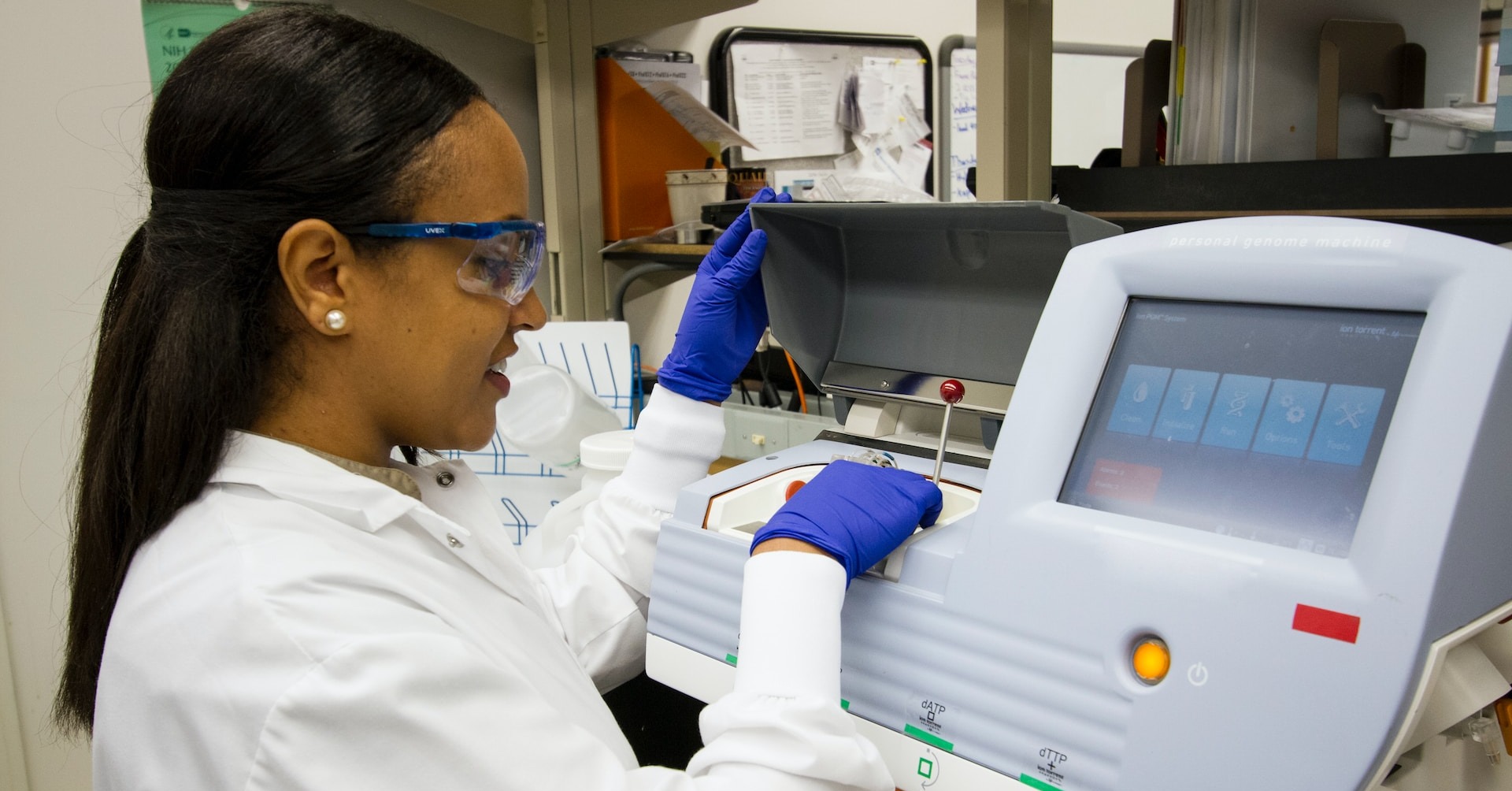
Where Can a Family Nurse Practitioner Work?
You'll find FNPs in primary care clinics, hospitals, urgent care [...]

The human eye blinks an average of 4,200,000 times a year. Seaweed can grow up to 12 inches per day. When glass breaks, the cracks move at speeds of up to 3,000 miles per hour. These numbers are generated from statistical methods utilized by statisticians. An MS degree in statistics could provide you with the methodology to glean these kinds of stats and more.
Statistics are ubiquitous and growing more so every day of the Big Data era. That’s why you see statisticians working in or alongside practically every industry. Federal leaders rely on statistical modeling to evaluate policies, including economic and educational programs. In healthcare, statisticians work to understand and monitor health issues and cost efficiencies. You can also find statisticians hard at work in finance, homeland security, and even professional sports.
It’s easy to confuse statistics with data science, but the two are merely related. Statisticians present data using linear models, statistical computing, and probability theory. Data scientists collect data using tools like data mining and machine learning. Both work with data, but the end results differ.
So, how does an aspiring statistician obtain this sought-after skill set?
Completing a Master of Science in Statistics or a Master of Science in Applied Statistics provides degree holders with an invaluable breadth of knowledge in the field. Obtaining either degree also frequently leads to sharp salary increases. The United States Bureau of Labor Statistics (BLS) reports that most employers look for statisticians with a master’s degree in statistics, data analytics, or data science.
So, what is a master’s in statistics? This article explores that question by covering the following topics:
A master’s in statistics is an advanced mathematics degree. You’ll likely run across the term applied statistics while researching degree programs. According to Michigan Technological University, applied statistics offers a more practical focus than traditional statistics programs, though both cover similar methods and techniques.
Many self-described statisticians on Reddit claim applied statistics programs offer more elective opportunities than traditional programs. Here, students can pursue related coursework in other fields, including business.
Both statistics and data science programs teach how to parse data to glean insights. Statistics programs may also include coursework on collecting data, coding, and programming. One statistics professor, quoted in a U.S. News & World Report article, predicts statistics and data science will merge in coming years.
| University and Program Name | Learn More |
|
Boston College:
Master of Science in Applied Economics
|
|
|
Boston College:
Master of Science in Applied Analytics
|
|
|
Merrimack College:
Master of Science in Data Science
|
|
|
University of Washington:
Master of Science in Information Management
|
A master’s in statistics can lead to many high-paying career opportunities. The BLS notes statisticians earn a median annual income of $95,570 across all industries. Those working in research and development in the physical, engineering, and life sciences sector earn the highest average annual income ($114,770), followed by federal government employees ($114,050). Conversely, statisticians earn a lower annual average wage working for insurance carriers ($83,820), healthcare and social assistance organizations ($79,060), and colleges, universities, and professional schools ($77,750).
U.S. News & World Report ranks statistician as the eighth-best job in the country, and the third-best business job. Professionals typically enjoy their jobs and stay in their careers. The report also notes that statisticians experience below-average stress with above-average flexibility and upward mobility.
Statistician is just one job title in this enormous field. Other potential roles include:
Each role offers a unique salary and job description. Actuaries perform cost risk analysis and use their findings to help business leaders make decisions. They earn a median annual salary above $110,000, with top earners in the field making over $150,000. These professionals may not always require a master’s, depending on their employer.
Operations research analysts evaluate organizational data to identify inefficiencies and other issues. Then, they utilize their findings to improve productivity. The median operations research analyst salary is over $85,000 annually, with top earners making over $115,000.
Statisticians can work in many fields, including healthcare, biology, economics, and political science. According to the BLS, the federal government employs the highest percentage of statisticians (15 percent). Research and development in the physical, engineering, and life sciences is next highest (14 percent), followed by colleges, universities, and professional schools (9 percent), healthcare and social assistance organizations (8 percent), and insurance carriers and related activities (6 percent).
According to Indeed.com, master’s in statistics coursework covers such topics as:
Michigan Tech‘s applied statistics programs include:
Finally, many master’s programs include a capstone requirement. Capstone projects allow students to showcase their skills, often around a chosen area of specialization. Projects frequently utilize real-world data and can serve as a work sample for employers.
Choosing a statistics program poses unique challenges. Experts suggest looking for a program that allows students to learn programming, data visualization, and use of real-world data. The school should also have excellent alumni success stories.
Most important, students should pick a graduate program based on their career goals. For example, if you want to pursue biostatistics, you may prioritize programs with healthcare concentrations. Also, consider elective courses and internship opportunities before applying, as opportunities to specialize are numerous.
Finally, it may be helpful to expand your search beyond statistics programs. For example, Butler University’s online master’s in data analytics focuses on data analysis but includes core courses on statistical methods and modeling. As a result, graduates can pursue jobs like statistician and operations manager in addition to data science-focused roles like database administrator.
Earning a Master of Science (MS) in statistics typically takes two years of full-time study. Part-time students may take longer, while accelerated programs can shorten this timeline.
Each school imposes unique admissions requirements; a bachelor’s degree in mathematics, computer science, or a related field is generally advisable. Butler University accepts students from all undergraduate backgrounds, as long as they have a grade point average of 3.0 or higher.
Programs may require prerequisite undergraduate coursework in calculus, statistics, and linear algebra. In addition, many schools allow career changers who have gained relevant experience to complete required courses as part of a bridge program.
The application process is usually straightforward. Schools ask for standardized test scores, undergraduate transcripts, multiple letters of recommendation, a resume, and a statement of purpose. Some programs also require two or more years of work experience. Be sure to examine your chosen school’s requirements early.
For working students, the application process may include getting approval from your employer to return to school. Many employers even pay for graduate education. Students who take advantage of employer assistance may need to agree to continue working for their current organization for a specified period after completing their graduate studies.
Many institutions offer an online master’s in statistics. These programs are popular among working students. Graduate students typically pursue the same methodology and quantitative reasoning coursework and can even study with the same faculty members in online master’s programs.
Distance learning is more flexible because it reduces travel time and often includes pre-recorded lectures. Note that online master’s programs require a significant time commitment. In terms of curriculum content, online programs are no easier than their on-campus counterparts.
Questions or feedback? Email editor@noodle.com

You'll find FNPs in primary care clinics, hospitals, urgent care [...]

Epidemiologists work in many settings, including hospitals, universities, and federal, [...]

According to the Bureau of Labor Statistics, artificial intelligence and [...]

Modern business intelligence is all about data, which is why [...]

Modern businesses seek objective, quantifiable information to drive business decisions. [...]
Categorized as: Data Science, Information Technology, Information Technology & Engineering